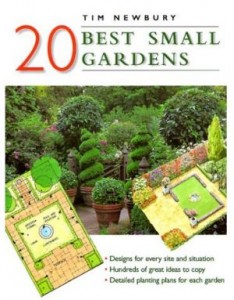- Six spectacular lily bulbs
- Good garden hat that doesn’t look goofy. Try Coastal Garden Hats, Kate’s Garden, and Tilley Endurables for classic shapes in hardworking fabrics
- Hour-long consultation with a garden designer
- Antique garden tools and collectibles (scour junk shops, yard and farm sales and country antique stores)
- Jaunty assortment of big cotton bandanas (for the neck, head, back pocket)
- Leaf shredder
- Pretty floral garden apron and kneeler
- Gift certificate to the best local nursery
- Whimsical piece of garden sculpture
- The most comfortable lounger or hammock you can find (the most expensive isn’t always the comfiest)
- Classic reference book: Reader’s Digest A-Z Encyclopedia of Garden Plants
- Armload of spring flowers delivered in January
- Super-deluxe gardening gloves
- Compost tea maker
- One-hour professional massage right after spring planting or fall cleanup
- Top-quality pocket pruner
- All-expenses-paid european garden tour (Britain-France-Italy). From $4,000; ask at botanical gardens, horticultural societies or travel agents, or visit www.icangarden.com.
- Fresh herbs in a beautiful pot for the kitchen windowsill
- Antique English lead urn (not for those who faint at high prices)
- Bug-proof gear for spring-those hilarious-looking hats and jackets will give you the last laugh when black flies bite
- Assortment of real, old-fashioned bushel baskets
- Fancy slougher and softening cream duo for gardener’s hands. Try Gardeners 60-Second Fix from Crabtree & Evelyn
- Membership to a botanical garden or subscription to a scholarly garden journal, such as the Royal Horticultural Society’s The Plantsman
- Really great gardening clogs
- An appointment with a landscape maintenance company for a big spring or fall cleanup
- Sturdy sweater for cool weather chores. If you’re not scared of vintage, nothing beats a 1950s or 1960s curling cardigan with Canadian outdoor motifs
- Botanical prints, nicely framed. (Aldona’s 18th-century prints came from an auction, but try flea markets, estate sales or even making your own)
- Wall fountain (preferably old and marble). Check architectural antiquarians (but not if four figures makes you blanch)
- Indoor grow light unit
- Glamorous, top-quality Victorian conservatory. $40,000 to sky’s the limit. Or, a miniature version filled with houseplants is just as nice! For a full-sized conservatory, try) Tropical Sunrooms and Classic Wood Conservatories
- Zinc or lead plant markers to add a classy, stately home touch
- Supple, black, rubber soaker hose
- Garden-inspired knobs and pulls. $2.95 (shown on next page)
- Colourful rain barrel
- Hand tool sharpener
- The services of a professional arborist to give shrubs or trees a good pruning
- Pretty vegetable-based soaps
- Garden lighting (do-it-yourself set or installed)
- Gorgeous weather vane, sensational sundial or beautiful bird bath
- A truckload of triple mix.
- Fancy bath salts (or a season’s worth of Epsom salts in a handsome galvanized bucket)
- Water timer for your hose
- Flower-power beads
- Donation to a charitable relief agency ($60 buys fruit trees for an African family)
- A subscription to Canadian Gardening magazine.
 20 Best Small Gardens,
20 Best Small Gardens,
by Tim Newbury; Ward Lock;
softcover; 96 pages;
$21.95
Gardeners of small patches who think they have to forgo the fountain or veto the vegetable garden can take heart from 20 Best Small Gardens; with forethought and a good plan, several garden styles can work in any space.
The first step in making the most of a small space is deciding on the essentials’for Newbury, these are dining, tool storage and somewhere to hide the garbage cans, since these appear in most plans’then siting the necessary elements in an optimum location. After that, it’s a matter of choosing a style and making the best of the remaining space.
The water garden, for example, includes terraced ponds, a trellis, statuary, barbecue, small shed, deck with ample room for a table and chairs, and a list of 50 plants. Not bad for a 30- by 30-foot (nine- by nine-metre) space.
Most of Newbury’s plans are formal, with areas for food production, flowers and dining delineated by hedges, trellises and varying paving materials. His examples range from a 26- by 28-foot (eight- by 8.5-metre) lot with foundation plantings and many containers, to a 39- by 46-foot (12- by 14-metre) L-shaped family garden. Site plans plot out the basic elements and bed locations, and a map shows what to plant and where. Very useful are a couple of alternative configurations for each design; you can reproduce the square formal garden to suit a triangular plot, for example.
After perusing the plans, you might find you have a spot for that trellis and room for al fresco dining, after all.
–Christina Selby
Published in Canadian Gardening
This site is being built
Christina Selby editor and writer living in Toronto.
